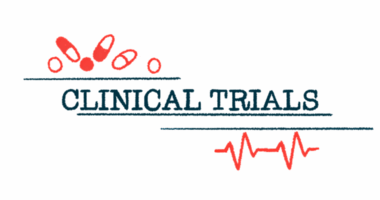Photopharmics raises $6M for Parkinson’s light therapy device
Funding will complete Phase 3 trial, support precommercialization efforts

Photopharmics will use $6 million in newly secured funding to complete a Phase 3 clinical trial testing Celeste, its light therapy device for Parkinson’s disease, and to support precommercialization efforts before submitting regulatory applications.
The ongoing Phase 3 trial (NCT04453033), dubbed Light for PD, has enrolled more than 200 participants in the U.S. The pivotal study, based at the University of Rochester in New York, is expected to involve 300 people with “relatively good eyesight,” per its eligibility criteria.
“With over 11 million people living with Parkinson’s globally — and no breakthroughs in decades — the need for innovation is urgent,” Kent Savage, CEO of Photopharmics, said in a company press release. “This investment helps us lay the groundwork for access, education, and advocacy around a convenient, noninvasive approach.”
People with Parkinson’s often report fatigue and sleep problems. Disruptions to the body’s internal clock, or circadian rhythm, also may be associated with both motor and nonmotor symptoms of Parkinson’s and can significantly impact quality of life among patients.
Celeste is a compact, tablet-sized device that emits specific wavelengths of light aimed at stimulating photoreceptors — light-sensitive cells at the back of the eye that help regulate circadian rhythms. The light from the device is based on the company’s Spectramax technology, and is intended to be used alongside standard treatments for Parkinson’s.
“With Celeste, we’re not just adding a new product—we’re building an entirely new category of care for Parkinson’s,” Savage said.
Celeste light therapy device now being tested in patients in trial
An earlier clinical trial (NCT02175472), completed in 2016, evaluated the company’s Spectramax technology in 92 patients who were on stable dopamine replacement therapy. The study compared outcomes between those using the Celeste device and those using a similar device emitting light not expected to have therapeutic benefits.
The findings showed that Celeste helped reduce disease severity and nonmotor symptoms while also improving quality of life for patients.
In the Phase 3 clinical trial that’s now underway, participants are randomly assigned to use either the Celeste phototherapy device or a sham device that emits a different range of light wavelengths not expected to be effective. The device is intended to be positioned toward the user’s face and used at home each evening for one hour, typically while engaging in everyday activities like watching TV, eating dinner, or reading.
The study, which spans six months, has enrolled more than 200 people with Parkinson’s to date, per Photopharmics. Participants take part in virtual clinic visits at the start of the study, and again at the three- and six-month marks. During these video appointments, the researchers evaluate changes in quality of life, as well as motor and nonmotor symptoms.
Initial findings from the study revealed that some participants experienced difficulties with remote consent and navigating the software. However, all were able to successfully set up and use the device.
We’re grateful for the enthusiasm and support of our investors as we move toward the finish line of our clinical program. … This funding gives us the runway we need to complete our [U.S. Food and Drug Administration] research, build strategic partnerships, and ensure the best possible outcomes for patients.
The new $6 million in investments will help further fund this study, as well as next steps in the device’s development, according to Photopharmics.
According to the release, the trial is expected to be completed in the coming months, and Photopharmics is preparing submissions seeking regulatory approval of the light therapy device.
“We’re grateful for the enthusiasm and support of our investors as we move toward the finish line of our clinical program,” Savage said. “This funding gives us the runway we need to complete our [U.S. Food and Drug Administration] research, build strategic partnerships, and ensure the best possible outcomes for patients.”







